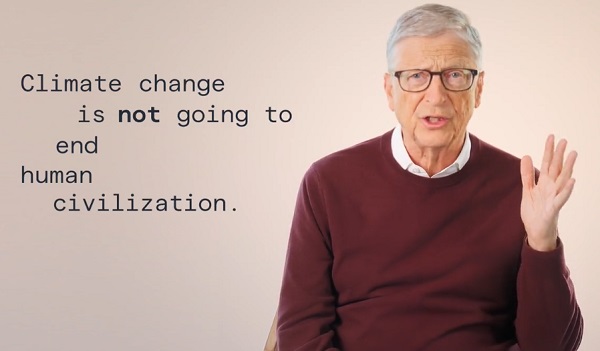Business
Craziest examples of government waste – Taxpayer Waste Watch
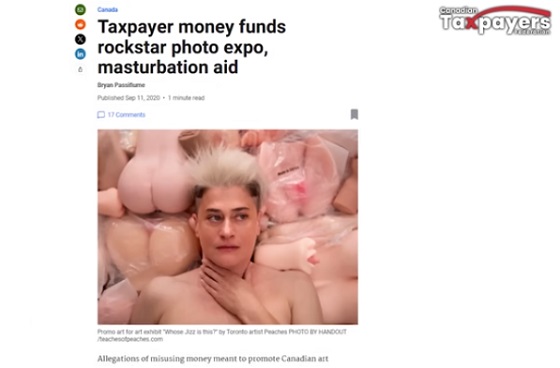
News release from the Canadian Taxpayers Federation
The feds are spending millions of your tax dollars trying to “green” their offices. Then the government is spending millions more of your tax dollars flying battalions of bureaucrats and politicians around the world.
Here’s a crazy idea: the government could save you money, and cut down on emissions, by skipping out on a couple taxpayer-funded international conferences.
Plus, we’ve compiled the craziest examples of government waste in one video. You’re going to love the video, but hate the waste.
All that and more in this week’s Taxpayer Waste Watch. Enjoy.
Franco.
Bank of Canada fixes with its left hand, what it breaks with its right
They say hypocrites are the kind of people who will cut down a tree, only to stand on the stump and give a speech about the importance of protecting forests.
Someone should get the fat cats at the Bank of Canada on the horn and let them know about that particular definition.
In recent years, the Bank of Canada dumped millions of your tax dollars into a green initiative aimed at lowering its carbon footprint.
Meanwhile, at the exact same time, its executives have been racking up frequent flyer miles while globetrotting to exotic, far-flung locales.
Burning through jet fuel and your tax dollars in the process.
Since 2020, the Bank of Canada dropped $4.1 million on its “greening the bank” initiative, a multi-year effort to measure and reduce its carbon footprint.
More than $1 million has been spent on internal program costs, alongside $950,000 on external consultants and studies, and $2.1 million on green investments.
On top of the greening the bank initiative, the Bank of Canada also signed a contract with the Delphi Group for up to $300,000.
The Delphi Group is a consulting firm “specializing in climate change, sustainability and ESG,” according to its website.
Six staff from the Delphi Group will aid the Bank of Canada’s “annual quantification of its GHG inventory,” according to records obtained by the CTF.
But if the Bank of Canada is looking for ways to lower its carbon footprint, it doesn’t need to spend millions hiring consultants.
All it has to do is look at its executives’ expense reports.
In 2023, Bank of Canada executives racked up $535,000 in travel expenses.
Bank executives took dozens of trips to exotic destinations, including Portugal, Japan, Greece, France, Sweden, Germany, India, Peru, the West Indies and Switzerland.
Bank Governor Tiff Macklem racked up $179,000 in travel expenses alone.
Macklem took 26 separate trips, including four visits to Switzerland, two to Sweden, two to India and one each to Morocco, Portugal, Japan and the Caymen Islands.
So first you’re forced to pay for first-class airfare so bank executives can jet set around the globe to attend conferences and give speeches.
And then you’re forced to pay for millions in consultant fees because the big brains at the central bank are confused why their carbon footprint is so high.
Needless to say, if they can’t crack that puzzle, then it’s little wonder why inflation has run rampant while ravaging the paycheques of taxpayers like you.
But don’t worry, folks.
If the bank runs out of your cash to blow on all these vacations – erm, sorry, we mean “work trips” – we’re sure they’ll just fire up the money printer to cover the costs.
Franco’s note: Any time we write about the Bank of Canada I need to mention this:
The Bank of Canada has one job: keep inflation low and around two per cent. Bank of Canada bureaucrats got $20 million in bonuses in 2022 while it hiked interest rates seven times and inflation reached a 40-year high.
This should go without saying, but bonuses are for people who do a good job, not people who fail at their one and only job.
Trudeau wants to spend your money on…
Every year, the federal government tables main and supplementary estimate documents that detail how your money will be allocated to fund government programs.
But with all the shenanigans currently holding up the House of Commons, the Trudeau government is worried they may not be able to fund these government schemes.
It’s a good bet Prime Minister Justin Trudeau and his minions will claim a vote is needed to make sure struggling Canadians get the help they need.
But the CTF read through the entirety of the recently-released Supplementary Estimates report to see what sort of spending the feds are actually proposing:
- $970 million to cover pay raises for bureaucrats
- $4.5 million for government advertising
- $46 million for the 2026 FIFA Men’s World Cup
- $20 million for Diversity, Equity and Inclusion at the Canada Media Fund
- $200,000 for Prime Minister Justin Trudeau’s plan to plant two billion trees
- $45 million for the gun confiscation scheme
- $6.9 million for pro-carbon tax ads
- $5.5 million for the Toronto Film Festival
- $3.4 million for settlements related to the Phoenix payroll fiasco
Does any of that sound like necessary government spending to you?
VIDEO: Craziest government waste
We’ve said it time and time again.
You pay too much tax because the government wastes too much money.
Don’t believe us? Then watch (and share) the video below.
CTF Federal Director Franco Terrazzano brings the receipts on some of the craziest government waste that’s out of Ottawa in recent years.
If you’re looking for more reading on taxpayer issues, we’ve got you covered.
Canada’s EV gamble looks even more foolish with Trump retaking the White House: https://torontosun.com/
Government employees scored $150M in standby pay last year: https://torontosun.com/
Saskatoon spent more than $300,000 to name new bus system: https://www.taxpayer.
Confirms $523K Rush Orders: https://www.
Trudeau’s bureaucracy boom: Salaries and spending spiralling out of control: https://www.
Premier Holt’s carbon tax flip-flop: https://tj.news/
Business
Bill Gates Gets Mugged By Reality


From the Daily Caller News Foundation
You’ve probably heard by now the blockbuster news that Microsoft founder Bill Gates, one of the richest people to ever walk the planet, has had a change of heart on climate change.
For several decades Gates poured billions of dollars into the climate industrial complex.
Some conservatives have sniffed that Bill Gates has shifted his position on climate change because he and Microsoft have invested heavily in energy intensive data centers.
AI and robotics will triple our electric power needs over the next 15 years. And you can’t get that from windmills.
What Bill Gates has done is courageous and praiseworthy. It’s not many people of his stature that will admit that they were wrong. Al Gore certainly hasn’t. My wife says I never do.
Although I’ve only once met Bill Gates, I’ve read his latest statements on global warming. He still endorses the need for communal action (which won’t work), but he has sensibly disassociated himself from the increasingly radical and economically destructive dictates from the green movement. For that, the left has tossed him out of their tent as a “traitor.”
I wish to highlight several critical insights that should be the starting point for constructive debate that every clear-minded thinker on either side of the issue should embrace.
(1) It’s time to put human welfare at the center of our climate policies. This includes improving agriculture and health in poor countries.
(2) Countries should be encouraged to grow their economies even if that means a reliance on fossil fuels like natural gas. Economic growth is essential to human progress.
(3) Although climate change will hurt poor people, for the vast majority of them it will not be the only or even the biggest threat to their lives and welfare. The biggest problems are poverty and disease.
I would add to these wise declarations two inconvenient truths: First: the solution to changing temperatures and weather patterns is technological progress. A far fewer percentage of people die of severe weather events today than 50 or 100 or 1,000 years ago.
Second, energy is the master resource and to deny people reliable and affordable energy is to keep them poor and vulnerable – and this is inhumane.
If Bill Gates were to start directing even a small fraction of his foundation funds to ensuring everyone on the planet has access to electric power and safe drinking water, it would do more for humanity than all of the hundreds of billions that governments and foundations have devoted to climate programs that have failed to change the globe’s temperature.
Stephen Moore is a co-founder of Unleash Prosperity and a former Trump senior economic advisor.
Automotive
Elon Musk Poised To Become World’s First Trillionaire After Shareholder Vote


From the Daily Caller News Foundation
At Tesla’s Austin headquarters, investors backed Musk’s 12-step plan that ties his potential trillion-dollar payout to a series of aggressive financial and operational milestones, including raising the company’s valuation from roughly $1.4 trillion to $8.5 trillion and selling one million humanoid robots within a decade. Musk hailed the outcome as a turning point for Tesla’s future.
“What we’re about to embark upon is not merely a new chapter of the future of Tesla but a whole new book,” Musk said, as The New York Times reported.
Dear Readers:
As a nonprofit, we are dependent on the generosity of our readers.
Please consider making a small donation of any amount here.
Thank you!
The decision cements investor confidence in Musk’s “moonshot” management style and reinforces the belief that Tesla’s success depends heavily on its founder and his leadership.
Tesla Annual meeting starting now
https://t.co/j1KHf3k6ch— Elon Musk (@elonmusk) November 6, 2025
“Those who claim the plan is ‘too large’ ignore the scale of ambition that has historically defined Tesla’s trajectory,” the Florida State Board of Administration said in a securities filing describing why it voted for Mr. Musk’s pay plan. “A company that went from near bankruptcy to global leadership in E.V.s and clean energy under similar frameworks has earned the right to use incentive models that reward moonshot performance.”
Investors like Ark Invest CEO Cathie Wood defended Tesla’s decision, saying the plan aligns shareholder rewards with company performance.
“I do not understand why investors are voting against Elon’s pay package when they and their clients would benefit enormously if he and his incredible team meet such high goals,” Wood wrote on X.
Norway’s sovereign wealth fund, Norges Bank Investment Management — one of Tesla’s largest shareholders — broke ranks, however, and voted against the pay plan, saying that the package was excessive.
“While we appreciate the significant value created under Mr. Musk’s visionary role, we are concerned about the total size of the award, dilution, and lack of mitigation of key person risk,” the firm said.
The vote comes months after Musk wrapped up his short-lived government role under President Donald Trump. In February, Musk and his Department of Government Efficiency (DOGE) team sparked a firestorm when they announced plans to eliminate the U.S. Agency for International Development, drawing backlash from Democrats and prompting protests targeting Musk and his companies, including Tesla.
Back in May, Musk announced that his “scheduled time” leading DOGE had ended.
-

 espionage1 day ago
espionage1 day agoU.S. Charges Three More Chinese Scholars in Wuhan Bio-Smuggling Case, Citing Pattern of Foreign Exploitation in American Research Labs
-
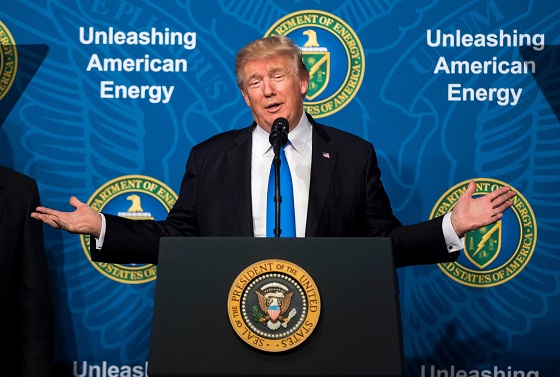
 Daily Caller2 days ago
Daily Caller2 days agoUS Eating Canada’s Lunch While Liberals Stall – Trump Admin Announces Record-Shattering Energy Report
-
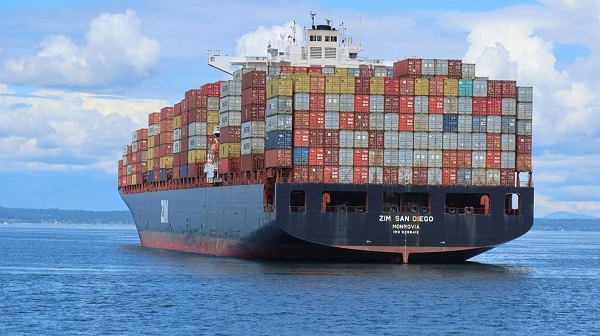
 Business1 day ago
Business1 day agoU.S. Supreme Court frosty on Trump’s tariff power as world watches
-
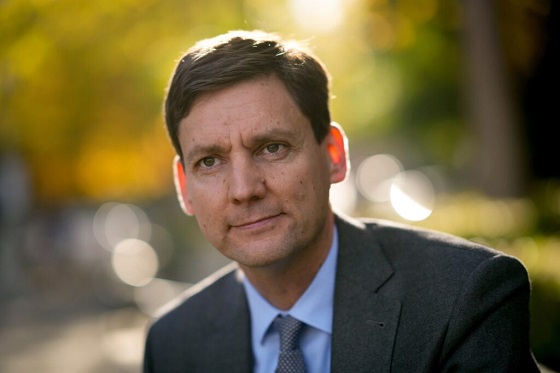
 Energy2 days ago
Energy2 days agoEby should put up, shut up, or pay up
-

 Justice2 days ago
Justice2 days agoCarney government lets Supreme Court decision stand despite outrage over child porn ruling
-

 Business11 hours ago
Business11 hours agoCarney’s Deficit Numbers Deserve Scrutiny After Trudeau’s Forecasting Failures
-

 Business17 hours ago
Business17 hours agoHere’s what pundits and analysts get wrong about the Carney government’s first budget
-

 Business2 days ago
Business2 days agoThe Liberal budget is a massive FAILURE: Former Liberal Cabinet Member Dan McTeague


